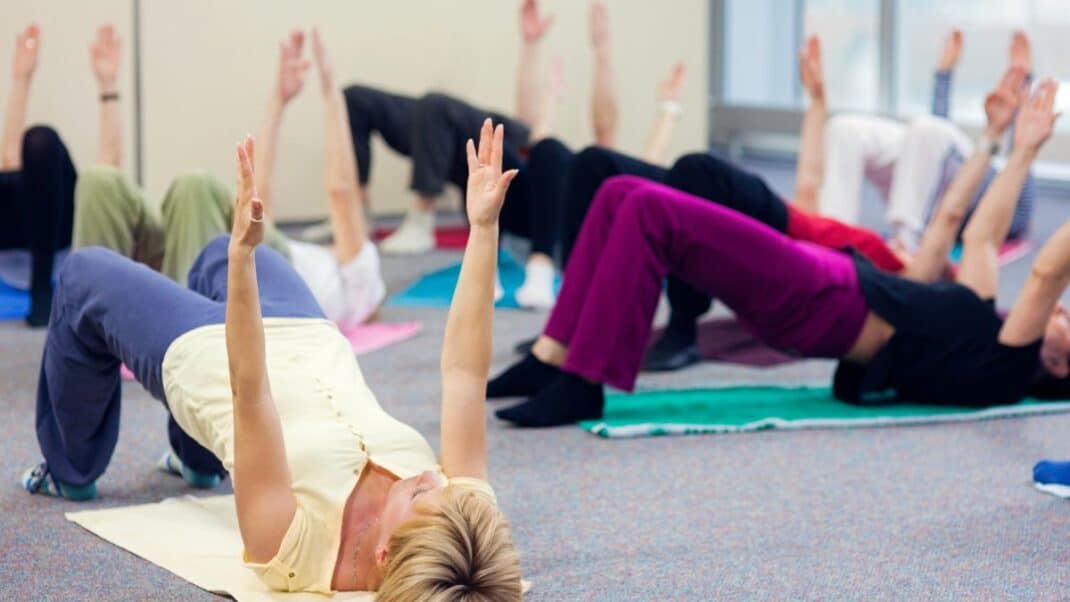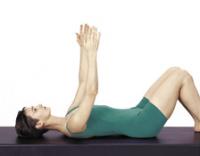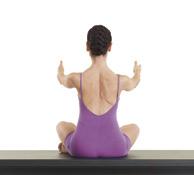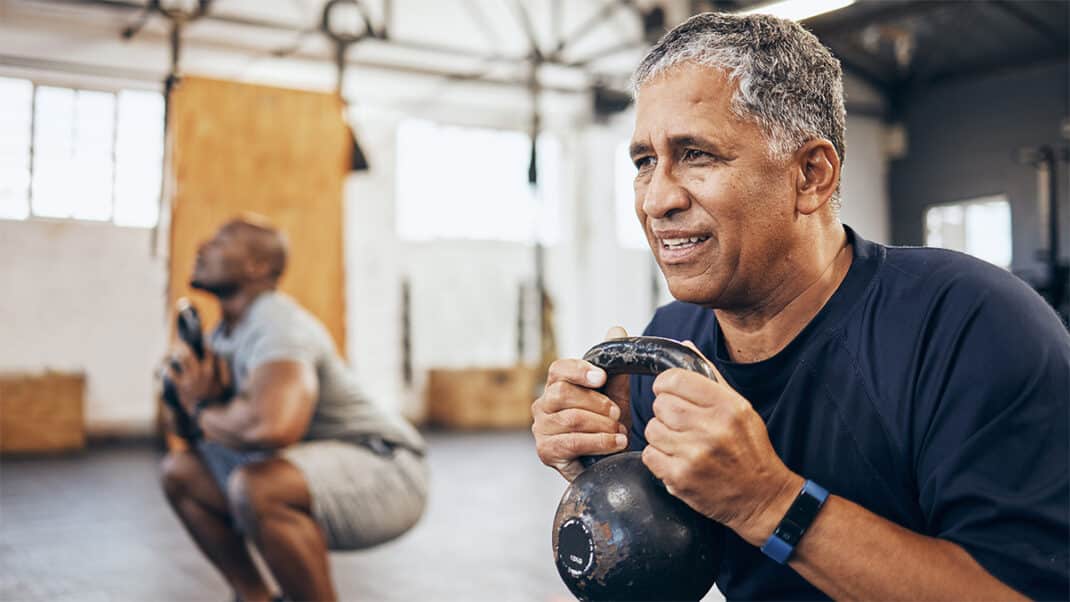Phase-One Exercises for Breast Cancer, Part One
Help your clients rebuild a foundation.

Breast cancer is the most common cancer in women in the United States, except for skin cancers. It is about 30% (or 1 in 3) of all new female cancers each year (American Cancer Society 2023). Fortunately, thanks to early detection and advancements in treatment, many more women will survive breast cancer and go on to live out their natural life expectancy. Despite this good news, cancer treatments take an enormous toll: in just a year of treatment, the body can age a decade. Between the inherent weight gain, muscle atrophy and premature bone loss, women are left weak and physically challenged even by normal day-to-day activities.
Pilates is a gentle restorative exercise regimen perfectly suited for women as they recover and work to rebuild their bodies. (The benefits also extend to the very small minority of breast cancer patients who are men.) Many people considered Joseph Pilates a master of rehabilitation during his lifetime. His approach emphasized precision and control. Combine those qualities with current exercise science and you have a recipe for success.
For a cancer survivor who is rebuilding her foundation of physical strength, the priorities are flexibility, endurance and self-esteem. Once the client’s medical team has given the okay to begin a gentle exercise program, the process begins.
Phase One
In the first session, be sure to review the client’s overall health history as well as the types of treatments and surgeries she has undergone. This information is instrumental in developing an effective and safe Pilates program. Remember that your role is not to diagnose, but to help with rehabilitation. It is therefore imperative that you prepare by gathering all of the facts before beginning.
Keep in mind that the usual stages for tissue healing and exercise progression differ greatly for a client who has had cancer versus a client who has suffered an acute or chronic injury. Symptoms like muscle tightness and joint stiffness are present in both instances. However, while the symptomology may appear similar, you cannot treat a mastectomy or lumpectomy as you would a rotator cuff or joint injury. Treatments like chemotherapy and radiation coupled with surgery greatly affect the time it takes to heal and fully recover. Also keep in mind that a breast cancer client may experience ongoing side effects unlike those that an injured client might have.
The phase-one exercises focus on developing the client’s kinesthetic awareness and on teaching very basic biomechanical movement principles. These principles are foundational and can be part of the client’s daily exercise regimen forever.
In this first of three installments, we will cover three principles:
- Breathing, Flexed Forward
- Pelvic Rocking: Imprint and Release
- Scapula Protraction and Retraction
Breathing, Flexed Forward
Benefits. The lymphatic system helps rid the body of toxins and is an essential part of the immune system. This is vital for cancer patients. In addition to gravity and muscular contractions, the breath serves as the primary pump for the lymphatic system. The breath also encourages engagement of the deep core musculature—transversus abdominis, internal obliques, pelvic floor and multifidus—all important for restoring posture and functional strength.
STOTT PILATES® photography
© Merrithew Corporation.
Start Position. Seated with knees bent, pelvis vertical, spine neutral, arms resting long by sides.
Exercise and Breath Pattern. Inhale to prepare. On exhalation, initiate from top of head and articulate spine into forward flexion. Maintain vertical upright pelvis, relax arms over shins (as shown in photo), inhale through nose and expand entire rib cage. Exhale through mouth, allowing rib cage to soften. Complete 3–5 full breaths while flexed forward. On last exhalation, initiate from tail and articulate spine, rolling up to start position.
Beneficial Cues
- On the inhalation, allow the ribs to expand like an accordion.
- On the exhalation, feel a gentle wrapping sensation around the torso.
- Focus on full breath patterns and relax; get centered.
Pelvic Rocking: Imprint and Release
Benefits. This move helps mobilize the lumbar spine and strengthen the abdominals, especially the obliques, which are essential in the case of TRAM (transverse rectus abdominis myocutaneous) flap surgeries, where the rectus abdominis is used for breast reconstruction.
STOTT PILATES® photography
© Merrithew Corporation.
Start Position. Supine on mat with spine neutral, knees flexed, legs hip distance apart, arms long by sides (place pillow under arm of affected side). Note: Photo shows arms in air so reader can see neutral shape of spine, but arms should be kept long by sides, supported with props if necessary on affected side.
Exercise and Breath Pattern. Inhale to prepare. On exhalation, contract abdominals, and imprint spine toward mat. Inhale to release back to neutral.
Beneficial Cues
- Gently rock the hips toward the ribs.
- Visualize a fossil imprint of your spine in sand; avoid pressing the lower back into the mat.
Scapula Protraction and Retraction
Benefits. This exercise focuses on scapulohumeral rhythm, which is often compromised with breast cancer surgeries. It strengthens the middle and lower fibers of the trapezius, the serratus anterior and the rhomboids, which are all extremely important for shoulder girdle mobilization and dynamic stability.
STOTT PILATES®
photography © Merrithew Corporation.
Start Position. Supine on mat with spine neutral, knees flexed, legs hip distance apart. Arms are extended toward ceiling (may have to do one arm at a time and use strong arm to help hold affected arm up). Note: Photo shows exercise seated upright so reader can see scapula movement. However, this exercise should be performed on mat in supine position with arms straight over chest reaching toward ceiling. See photo #2 for reference.
Exercise and Breath Pattern. Follow this pattern for the breathing:
- Protract: Inhale to protract scapulae, reaching arms toward ceiling; exhale to come back to neutral. Repeat 3–5 times.
- Retract: Inhale to retract scapulae, bringing them closer to spine; exhale go back to neutral. Repeat 3–5 times.
Beneficial Cues
- Feel the shoulder blades gliding along the ribs. They glide toward the spine and away.
- Visualize holding a roll of paper towels in your hands so that the distance between your arms doesn’t widen or narrow.
- Minimize the range of motion, and pay attention to be sure that movement occurs just with the shoulder blades and not the spine.
Read the next installment here.
References
American Cancer Society. 2007. Breast cancer facts & figures 2007-2008. www.cancer.org/downloads/STT/BCFF-Final.pdf; retrieved Feb. 14, 2008.
PJ O'Clair
PJ is a highly sought after, internationally recognized, award-winning health and fitness icon. She has published numerous fitness and therapeutic programs spanning many disciplines, including Pilates for Breast Cancer Rehabilitation, Fascia and Movement, and Athletic Performance for Cyclists. She is well known in both the consumer and professional markets as a movement innovator and Merrithew™ Master Instructor Trainer. PJ specializes in STOTT PILATES® and TRX®, and has appeared in well over 80 fitness DVDs and digital platforms.









